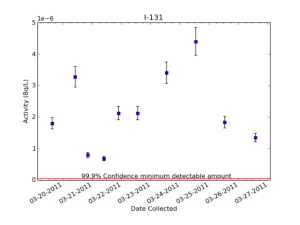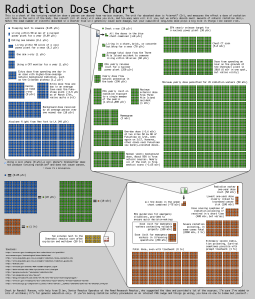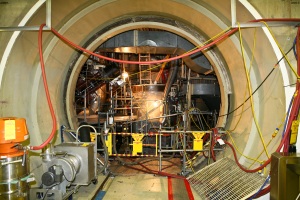Potassium iodide (also known by its chemical formula, KI) is a salt that is typically used to prevent the body from accumulating significant amounts of iodine-131, also known as radioiodine. If radioiodine uptake occurs, it may take several weeks to be completely removed from the body, during which DNA damage occurs in the thyroid gland. After several years, thyroid cancer may develop.
First and foremost, we cannot stress enough that if you live outside Japan, you do not need potassium iodide. Iodine-131 has been detected across the United States in small amounts, levels so low that they are close to the lower limit of detectability for the radiation detectors being used. As stated previously in this blog, we can detect radiation at levels far lower than those that would be harmful. Many state health departments, including the Michigan Department of Community Health, maintain an inventory of potassium iodide for public distribution in the case of a nuclear accident in which radioiodine is released.
As with all iodine-containing compounds, potassium iodide is thyroid-seeking in humans. Healthy adults require approximately 100 micrograms of iodine per day, and most people ingest at least this much in table salt (sodium chloride), to which iodine is typically added to make iodized salt. A typical dose of KI meant for radioiodide uptake prevention is 130 milligrams, of which 100 milligrams is iodine, far greater than what the body typically needs. This saturates the thyroid, after which any additional iodine ingested, radioactive or not, is passed out of the body before it can accumulate in the thyroid.
Potassium iodide is most effective against exposure from radioiodine if taken before exposure, but some protection is provided even if taken several hours later. However, if more than a day has passed since exposure, potassium iodide should not be taken. Otherwise, excretion of the radioiodine by the body will be delayed.
Potassium iodide does not protect against any other sources of radiation. Therefore it should only be taken on the advice of public health officials, who can detect radioiodine and inform you if potassium iodine is necessary.
Even in the case of airborne radioiodine contamination, potassium iodide may not be necessary. If radioiodine is present in the air, it will eventually settle onto the ground, where it will settle onto leafy, above-ground vegetables. These are eaten by animals, primarily cows, causing radioiodine to concentrate in milk (and meat to a lesser extent). Swift action by local and national government regulators to ban affected food products can prevent iodine from reaching the body before potassium iodine is needed. Had milk been banned after the Chernobyl accident, far fewer thyroid cancers would have resulted from it. As iodine-131 has a half-life of approximately eight days, the affected food pathways will be clean after three months. Ten half-lives is a conservative guideline to follow in order to allow nearly all harmful radioisotopes to decay, which is 80 days in this case.
The intake of potassium iodide tablets is recommended by the International Commission on Radiological Protection for the following dose levels:
0 – 12 years of age and pregnant women: 50 mSv and above
13 – 45 years of age (including breastfeeding mothers): 250 mSv and above
Adults of 45 years are recommended not to take iodine tablets by the ICRP, as the risk of serious thyroid disorders due to megadoses of iodine is greater than the radiation risk due to inhalation of radioiodine. Cancer develops slowly, and in general carcinogenesis is much more dangerous to future health if it occurs earlier in life.
The most risk from radioiodine is caused by doses greater than the dose recommendations above, but less than 10 gray of organ dose. Above that value, the thyroid is destroyed, rendering thyroid cancer development impossible. Radioiodine can be administered purposefully in large doses to thyroid cancer patients, specifically to destroy the thyroid and the cancer along with it. The thyroid gland is not necessary to live.
Although potassium iodide is usually harmless, the thyroid may react to large doses of iodine, causing goiters and other problems. Although seafood allergies are often confused for iodine allergy, as seafood contains high amounts of iodine, seafood allergies are typically caused by proteins including parvalbumins in fish and tropomyosins in crustaceans and mollusks. Only very rarely are humans allergic to iodine itself, though this should not be taken to mean that taking large doses of iodine entails no risk of side effects.
Even if you feel that you should buy potassium iodide “just to be safe”, there is no need for members of the public outside of Japan to do so, and taking it against recommendations can cause health problems. These problems are outweighed by the protection from thyroid cancer in cases of high doses of radioiodine exposure, but that is not the case outside of the Fukushima exclusion zone at this time. The best defense against radioiodide is prevention of the distribution of contaminated food items, which should be practiced at a governmental level.


